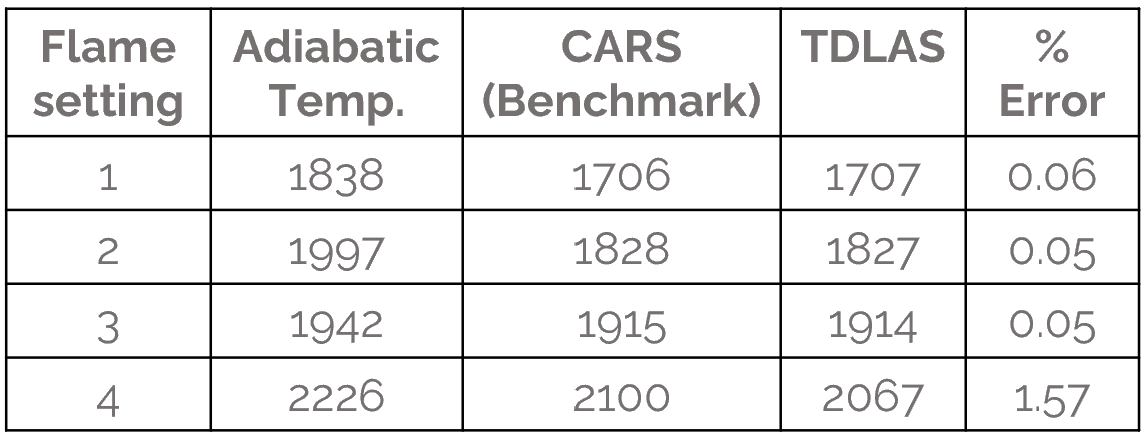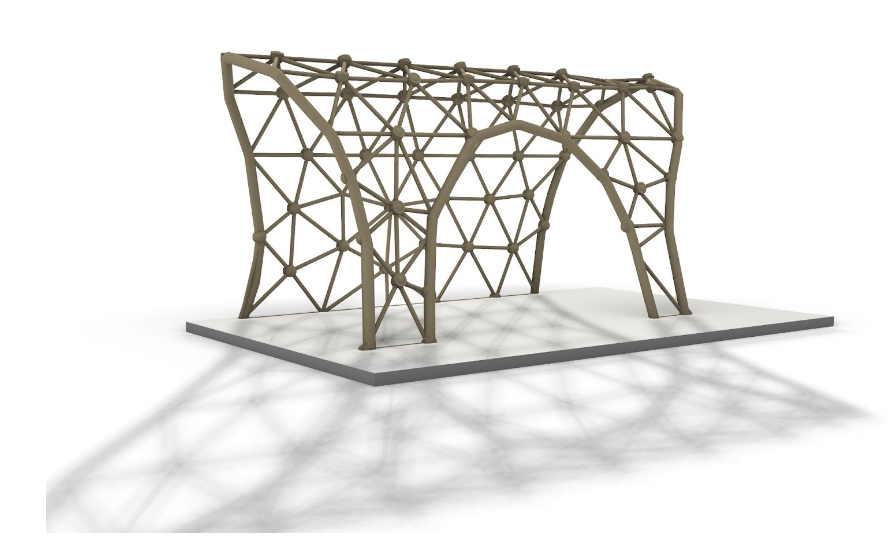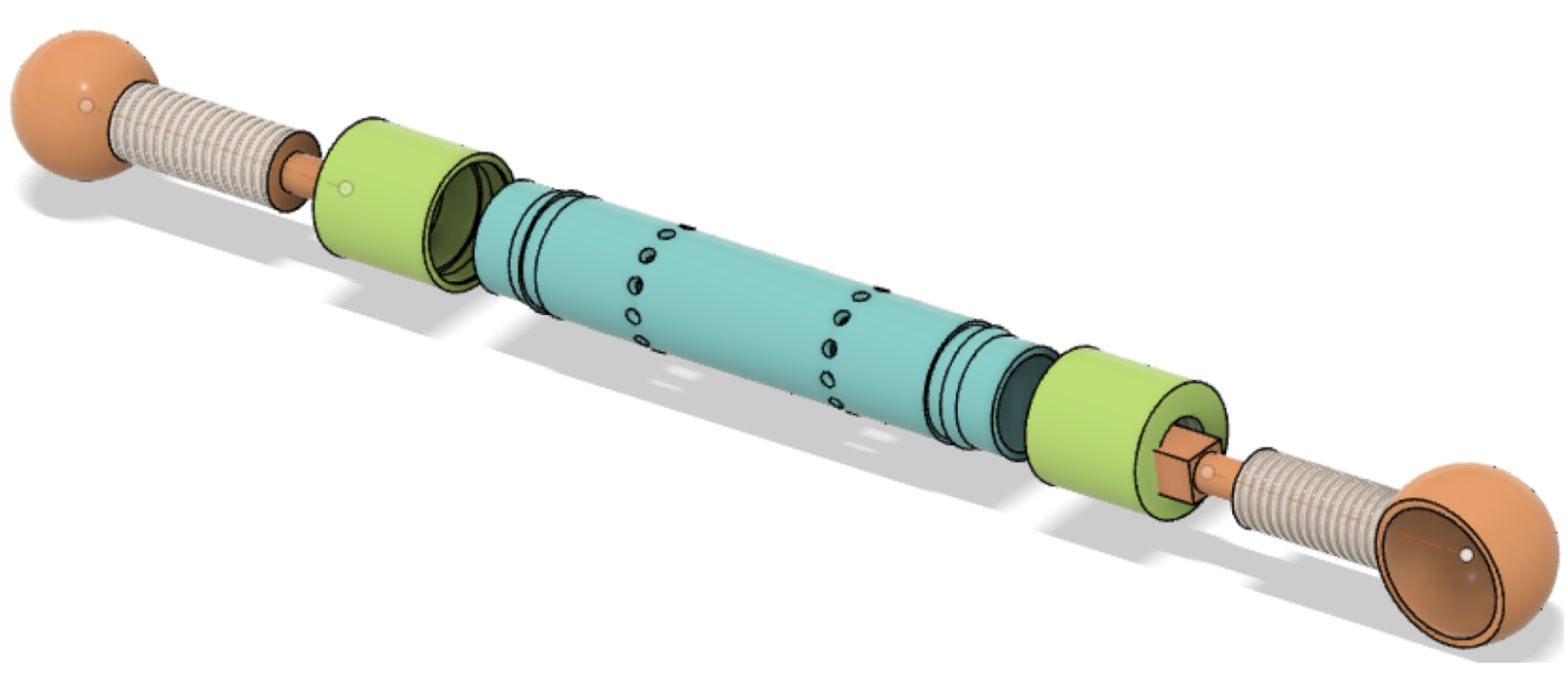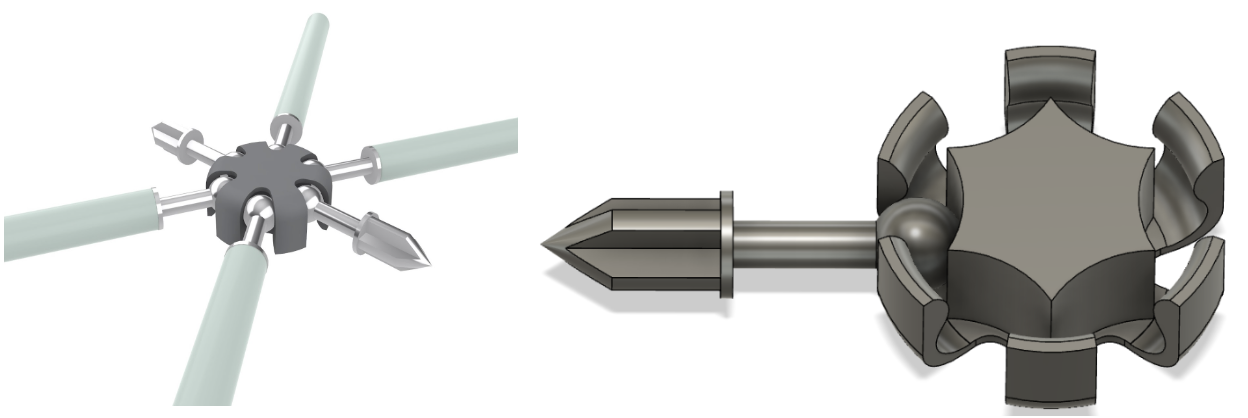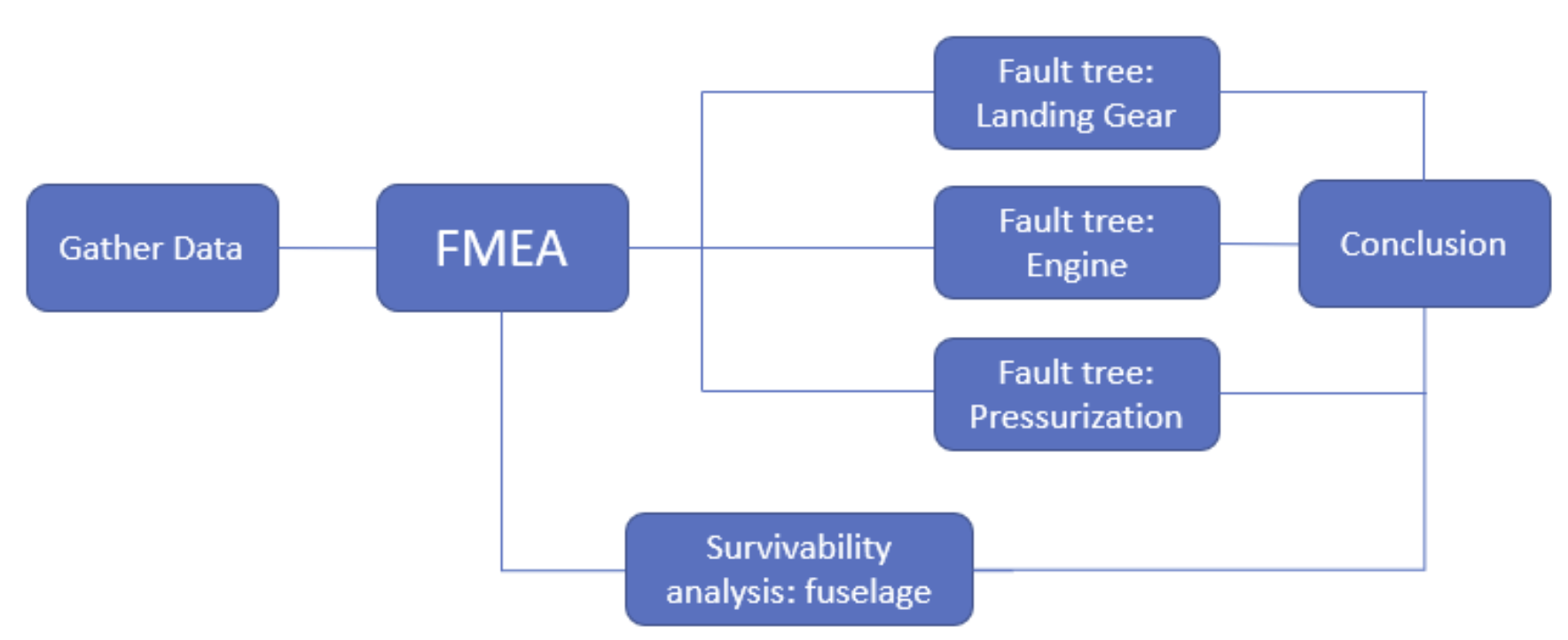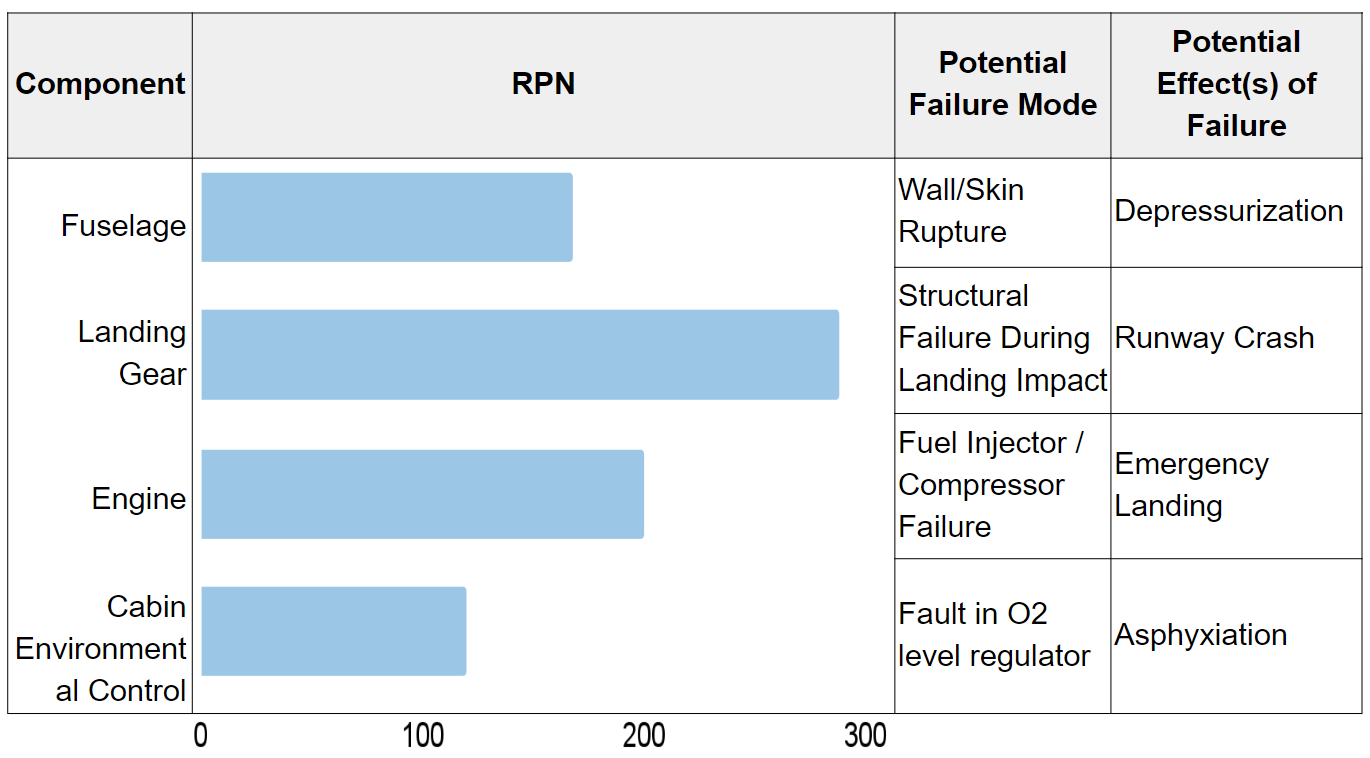
Laser Spectroscopy
Laser Spectroscopy
One of the fundamental parameters required for the characterization of any combustion system is temperature (the others are the total pressure and partial pressure of the gas components) and is paramount for diagnosing combustion efficiency. The present study involves the development of a high-speed temperature sensor using tunable diode lasers. The goal is to design and develop a Tunable Diode Laser Absorption Spectroscopy (TDLAS) temperature sensor to monitor path averaged gas temperature with high temporal resolution for combustion application.
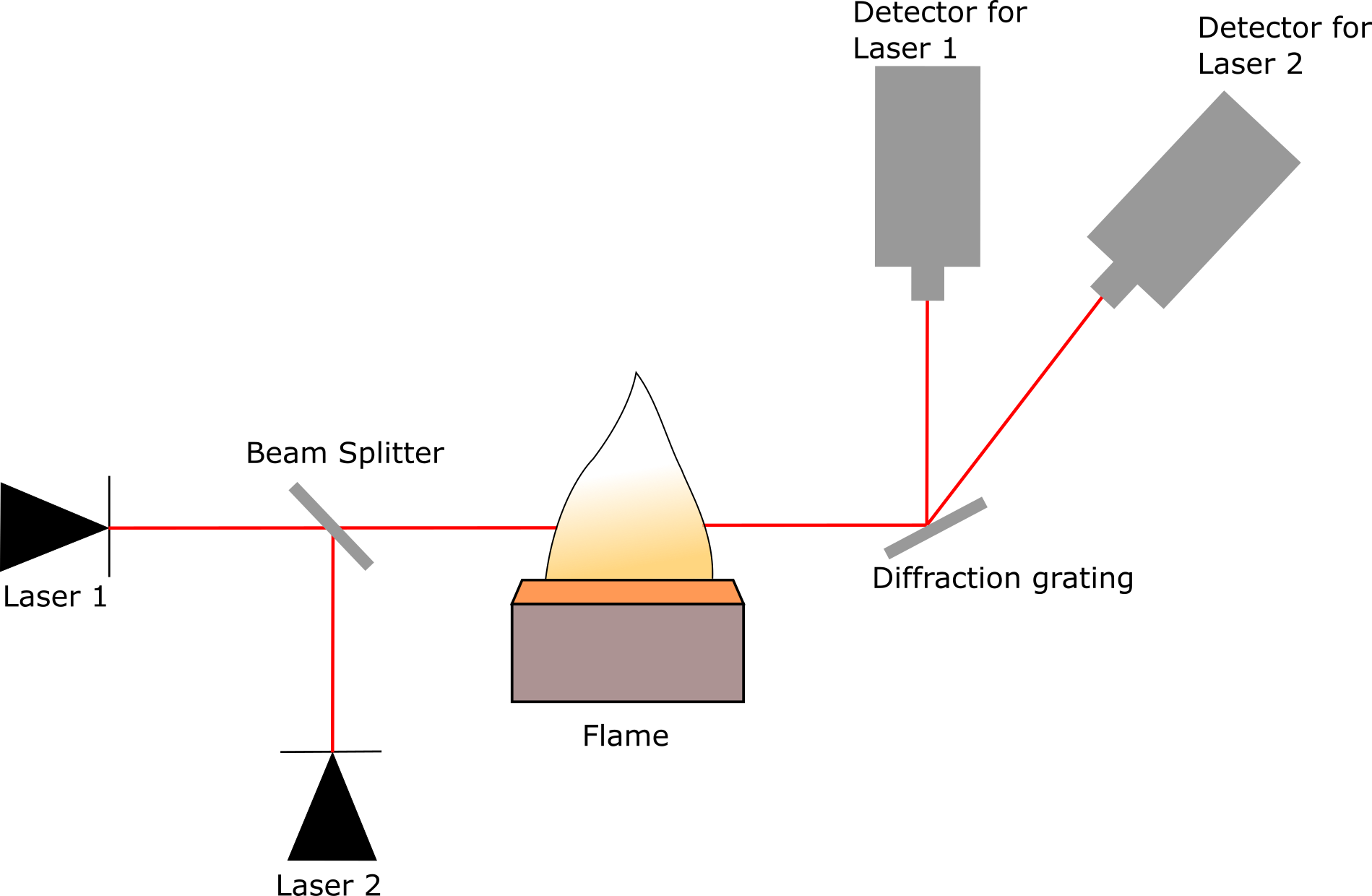
The method is based on the Beer-Lambert law for absorption spectroscopy. H2O vapour is selected as the target absorbing species as it is naturally present in the combustion exhaust as a major combustion product and has a rich absorption spectrum throughout the infrared. Here, a scanned wavelength 2-line thermometry method is employed where the ratio of integrated absorbance for two transitions with different temperature dependence is a function of the gas temperature. The sensor is first validated in a premixed methane/air flame stabilized in a standard McKenna burner for known operating conditions. Exhaust gas temperature measurements from a swirl stabilized non-premixed methane/air flame for varying global equivalence ratios are then conducted to demonstrate the robustness and stability of the sensor.
A molecule can absorb a particular wavelength of photon and get excited to next quantum level. As a result, the intensity of laser exiting the flame isn't the same as when entering, as shown in the figure above. Laser Absorptive Spectroscopy (LAS) basically exploits the fact that the characteristics of absorption done by a molecule for a given wavelength of light has dependence on the temperature of the absorbing molecule. If sweep over a wavelength is created using tunable diode laser, a dip in intensity is observed at a particular frequency, which is called absorption peak. The location, shape and size of the absorption peak are used to determine temperature using Beer-Lambert's law.
Two DFB tunable diode lasers of differnet wavelengths were used with ±1 nmtunability. They could be tuned by varying current or temperature. In the current study, temperature is kept constant and laser is being tuned using current, considering the less response time involved current control. The lasers had to be calibrated for laser current and laser temperature. Following figure shows callibration chart for 1343 nm laser.
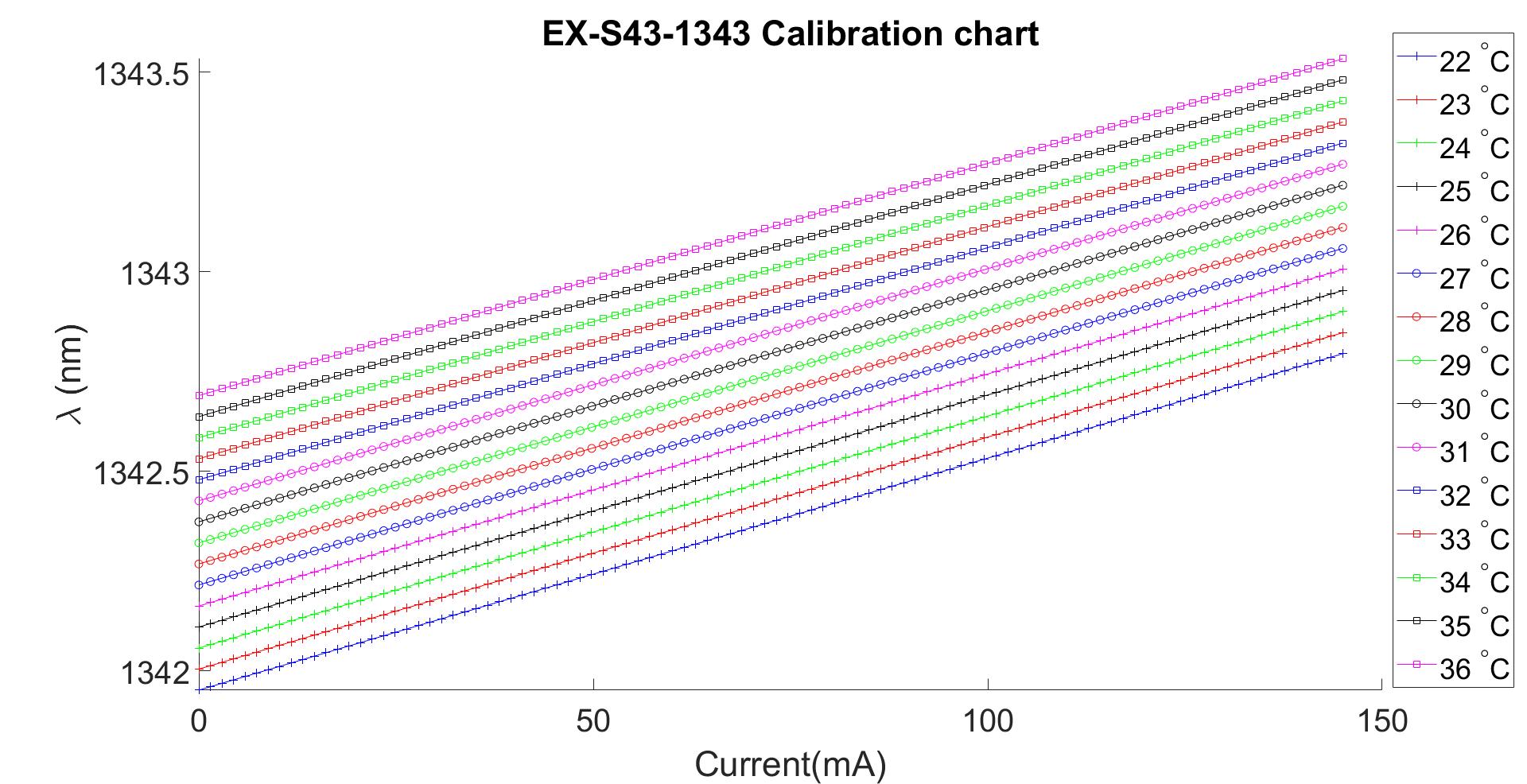
Following shows the photo of experimental setup. The combination of pinhole and beam splitter was used to reduce the laser optical power to working range of the detector. Pinhole also reduces the beam diameter, so that the entire beam falls within the detector region. For high temperature measurements, Mckenna flat flame burner is operated at calibrated conditions. The beam of laser passes over Mckenna burner at 15 mm distance.

The results of experiments are listed below. Coherent Anti-stokes Raman Spectroscopy (CARS) is another non-intrusive temperature measurement technique used for point measurement of temperature and it is known to be very accurate, however, the setup is extremely bulky and the data sampling is relatively slow. For the sake of the validation of TDLAS technique, the comparison is made with theoretical predictions and CARS measurement.
